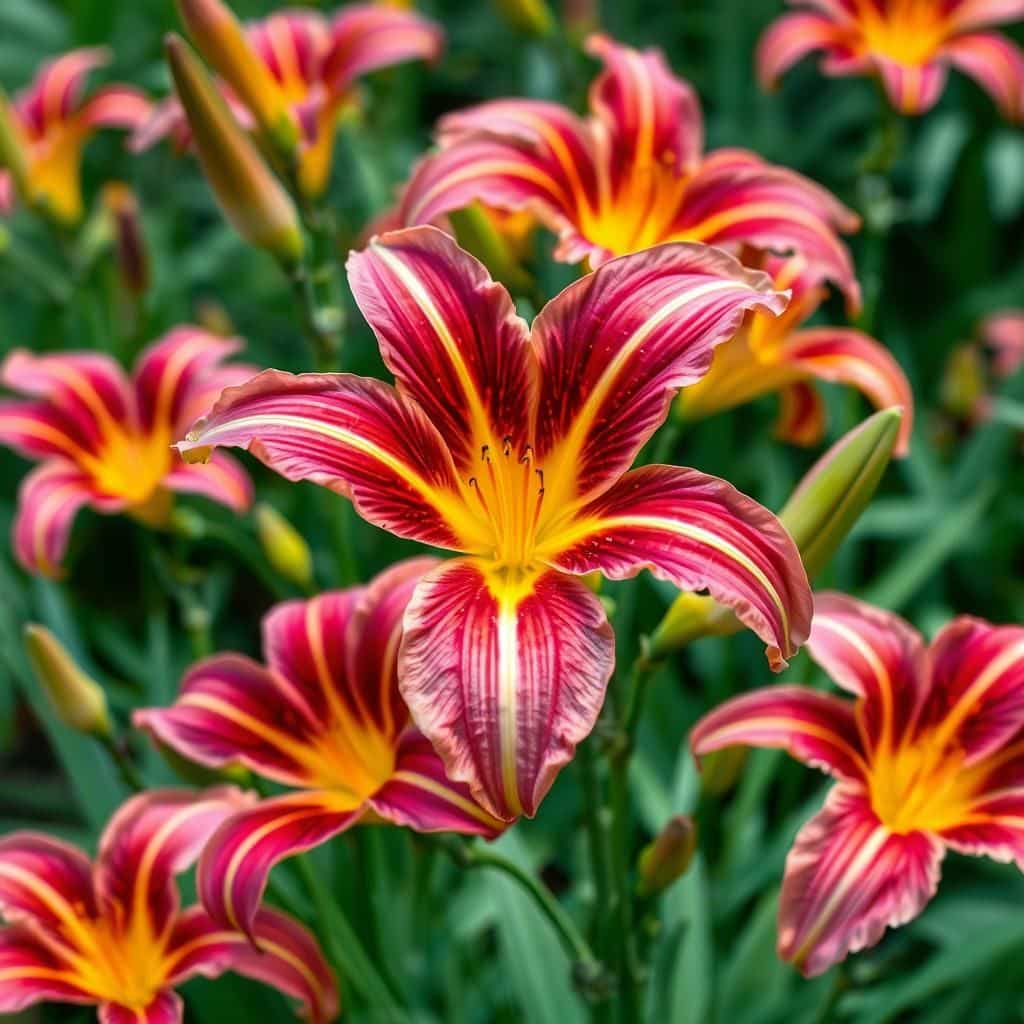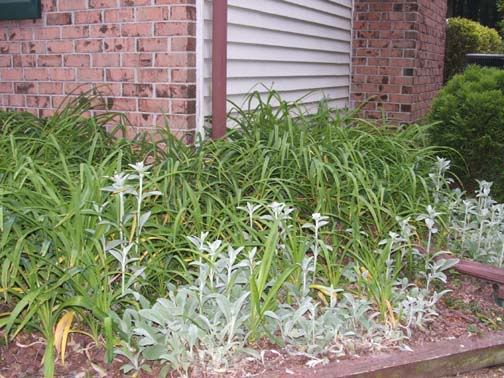Do Daylilies Like to Be Crowded? Discover the Best Planting Tips for Healthy Blooms

Daylilies are beloved perennials known for their vibrant blooms and adaptability in various garden settings. One common question among gardeners is whether these stunning flowers thrive when planted closely together or prefer more space. Understanding the ideal planting conditions for daylilies is essential for encouraging healthy growth and prolific flowering. In this article, we will explore the implications of crowding daylilies and provide expert tips for planting, spacing, and caring for these resilient plants. Whether you’re a seasoned gardener or a novice looking to enhance your landscape, discover how to get the most out of your daylilies.
Do Daylilies Prefer Crowded Conditions?
Daylilies, known for their resilience and vibrant blooms, can thrive in somewhat crowded conditions, but there is a fine balance to maintain. When planted too closely together, daylilies may compete for vital resources such as nutrients, water, and sunlight, leading to diminished growth and fewer flowers. However, they are also known to tolerate and even thrive in dense plantings as long as they are kept relatively healthy and well-watered. Gardeners should be proactive in monitoring the growth of daylilies and consider dividing clumps every few years to ensure optimal growth and blooming potential, thus striking a balance between enjoying their aesthetic appeal and supporting their biological needs.
Understanding Daylily Growth Habits
Daylilies exhibit a tough growth habit that allows them to adapt to various soil and environmental conditions. They typically spread through a process called clumping, where new shoots emerge from the base. Understanding their natural tendency to grow in larger clusters can help gardeners appreciate how they manage crowding. While this adaptability makes daylilies popular in landscaping, it also necessitates a certain level of maintenance to ensure they don’t compete too aggressively.
Benefits of Planting Daylilies Closely
Planting daylilies closely can have several advantages, including a more lush landscape appearance and effective ground cover. When grouped together, their foliage can effectively suppress weeds and can lead to a stunning display when in full bloom. Additionally, these clusters can offer protection against pests and harsh conditions, contributing to a healthier garden overall. However, the benefits come with the need for careful management regarding spacing and watering.
Signs of Overcrowding in Daylilies
Overcrowding can lead to several visible signs that indicate daylilies are competing too intensely. Some indications include stunted growth, yellowing leaves, diminished blooming, and in some cases, flower size may reduce significantly. It's important for gardeners to observe these signs and act accordingly, as timely intervention can lead to better results and maintain the health of the plants.
When to Divide Daylilies
Dividing daylilies is an essential practice that helps manage their growth and overcrowding. The best time to divide them is typically in early spring or late summer after flowering. During this process, gardeners can remove the central portions of the clump that may be overcrowding the others, promoting better airflow and access to nutrients. This procedure not only revitalizes the plant but also allows for the propagation of more daylilies in different areas of the garden.
Best Practices for Managing Daylily Crowding
To effectively manage crowding among daylilies, gardeners should implement several best practices, including regular maintenance of their plants through watering, fertilizing, and timely division. Ensuring proper spacing during initial planting can help avoid overcrowding issues in the future. Moreover, observing growth trends and being proactive in addressing overcrowded conditions can help gardeners achieve a more vibrant and bloom-rich garden environment.
| Aspect | Description |
|---|---|
| Optimal Spacing | 12-18 inches apart for healthy growth |
| Signs of Overcrowding | Yellow leaves, stunted growth, reduced blooms |
| Best Time to Divide | Early spring or late summer |
| Benefits of Close Planting | Lush appearance, effective weed suppression |
| Essential Care | Regular watering, fertilizing, and monitoring |
Can daylilies get too crowded?

Yes, daylilies can become too crowded over time. These perennial plants are known for their resilience and ability to thrive in various conditions, but when they are planted too closely together, it can lead to several issues that ultimately affect their growth and blooming capacity.
When daylilies are overcrowded, they compete for essential resources such as nutrients, water, and sunlight. This competition can stifle their growth, leading to smaller blooms or fewer flowers each season. Additionally, densely packed daylilies are more susceptible to diseases and pests, as the moisture and humidity can increase in tightly clustered plants, promoting fungal issues and other plant health problems.
To maintain the health and vigor of daylilies, it's essential to monitor their planting density and perform regular maintenance through division and replanting.
See also:
Understanding Daylily Crowding
Daylilies are generally tolerant plants, but their crowded conditions can create a less-than-ideal environment for growth. Over time, as they multiply, they can easily become overcrowded, leading to a variety of issues.
- Competition for Resources: When daylilies are too close, they fight for water, nutrients, and light.
- Stunted Growth: Crowded daylilies may produce fewer and smaller flowers, negatively impacting their appearance.
- Increased Disease Risk: Dense foliage can hold moisture, leading to greater susceptibility to diseases.
Signs of Overcrowding in Daylilies
Recognizing the signs of overcrowding is crucial to ensuring the health of your daylilies. Certain visual cues indicate that the plants may be too close together.
- Reduced Flowering: If plants bloom less than usual, overcrowding may be an issue.
- Thin and Weak Stems: Stems that are unable to support the plant can indicate resource competition.
- Diseased and Unhealthy Foliage: Look for signs of rot or fungal infections, which are common in crowded conditions.
Impact of Overcrowding on Daylily Blooming
Overcrowded daylilies often lead to fewer blooms, thereby reducing the visual appeal of your garden. The impact on blooming can vary dramatically based on the density of planting.
- Fewer Flower Buds: Crowding can limit the number of buds that form, causing a sparse display.
- Smaller Flowers: Plants may produce diminutive flowers, which can detract from their natural beauty.
- Out of Blooming Cycle: Overcrowded daylilies might not synchronize blooming, disrupting garden aesthetics.
Managing Daylily Density
To prevent overcrowding, proper management practices should be employed. These practices help maintain a healthy distance between plants and promote optimal growth.
- Regular Division: Divide daylilies every few years to prevent overcrowding and encourage healthier blooms.
- Strategic Spacing: When planting, make sure to space each plant according to its growth potential.
- Observation and Care: Regularly assess plant health and adjust arrangements as necessary to promote optimal growth.
Benefits of Dividing Crowded Daylilies
Dividing crowded daylilies is beneficial in several ways, contributing positively to both plant health and the overall landscape.
- Improved Air Flow: Dividing plants allows for better air circulation, reducing disease incidence.
- Enhanced Growth: Provides each plant with more resources, leading to stronger and larger blooms.
- Encourages New Planting: Divided daylilies can be replanted elsewhere, expanding your garden's beauty.
How many daylilies should you plant together?

When planting daylilies, it's crucial to consider the number of plants to create a visually appealing and healthy display. The recommended number of daylilies to plant together often depends on several factors like the size of the garden area, the growth habits of the specific daylily variety, and personal aesthetic preferences. A common guideline is to plant daylilies in clusters of 3 to 5 for a more natural, fuller look, but this can vary based on individual circumstances.
Factors Influencing Planting Density
The number of daylilies you should plant together can be influenced by various factors:
- Space Available: Assessing the size of your planting area is essential. More space allows for larger clusters.
- Variety: Some daylily varieties grow larger than others, which affects how closely you can plant them.
- Growth Habit: Understanding if a variety spreads or stays compact helps determine spacing.
Creating Visual Appeal
Establishing a visually appealing garden with daylilies involves thoughtful planning.
- Color Combinations: Plant daylilies with different colors together for a vibrant effect.
- Height Variation: Vary heights by mixing different varieties to create depth.
- Season of Bloom: Consider overlapping bloom times for sustained visual interest.
Maintenance Considerations
Maintaining a cluster of daylilies requires some planning:
- Watering: Greater density may lead to competition for water among plants.
- Pest Control: More plants may attract pests; regular inspection is vital.
- Fertilization: Dense planting can lead to nutrient depletion, requiring careful fertilization.
Companion Planting
Companion planting with daylilies can enhance their growth and health:
See also:
- Complementary Plants: Pair with plants that have similar water and light needs.
- Attracting Pollinators: Include plants that attract beneficial insects to support daylilies.
- Textural Variety: Combine with foliage plants for a richer textural landscape.
Designing a Cohesive Landscape
Incorporating daylilies into your overall landscape design requires consideration of various elements:
- Theme: Decide on a design theme that incorporates the color and shape of daylilies.
- Path Layout: Ensure pathways allow for an easy view of blooming daylilies.
- Bordering: Use daylilies to outline garden beds or pathways for an organized look.
What happens if you don't split daylilies?
:max_bytes(150000):strip_icc()/transplanting-daylilies-4685642-hero-65e42febba7b49729c05718ea3ef8d7f.jpg)
If you don't split daylilies, several outcomes can affect both the health of the plant and the overall aesthetics of your garden. Daylilies (Hemerocallis) are perennial plants that thrive in many garden settings, but neglecting to divide them can lead to a variety of complications.
Overcrowding Issues
Failing to split daylilies may result in overcrowding, where the plants become too dense. This overcrowding can negatively impact airflow, leading to increased humidity around the plants.
- Reduced light availability for inner plants, stunting their growth.
- Higher susceptibility to diseases like fungal infections due to increased moisture.
- Competition for nutrients and water, which can weaken the overall plant health.
Decline in Flower Production
Without regular splitting, your daylilies may produce fewer flowers over time. As plants grow denser, they often prioritize foliage over blossoms.
- Gradual decline in floral abundance, diminishing the visual appeal of your garden.
- Potential for fewer color variations, as bloom diversity may suffer.
- Shift in blooming periods, disrupting the seasonal aesthetic of the garden.
Root Rot and Disease Predisposition
Undivided daylilies are more vulnerable to root rot and other diseases. The dense root systems can develop problems if they become too compacted.
- Stagnant water can accumulate in the soil, leading to root decay.
- Increased chance of pest infestations due to unhealthy plant conditions.
- Potential for soil-borne diseases to take hold, further compromising plant health.
Weakened Plant Structure
As daylilies grow without being divided, the structural integrity of the plants may weaken over time. This can result in floppy or falling plants.
- Increased likelihood of plants flopping, which detracts from their visual appeal.
- Difficulty in maintaining a neat garden layout as plants grow unrestrained.
- Compromised aesthetic value, leading to a less organized garden appearance.
Decreased Lifespan of the Plant
If not split, the overall lifespan of daylilies can be significantly shortened. Plants that are not given enough space tend to become exhausted much quicker.
- Lower vigor as resources become depleted over time.
- Higher chance of complete plant failure, necessitating replacement.
- Reduced resilience against environmental stressors, hindering survivability in adverse conditions.
Questions from Our Readers
Do daylilies like to be crowded?
Daylilies generally do not thrive well when they are too crowded. Although they can tolerate some competition, overcrowding can lead to stress, reduced blooming, and an increased risk of pests and diseases. For optimal growth, it's recommended to provide them with enough space to expand.
How can I tell if my daylilies are overcrowded?
If your daylilies are displaying stunted growth, fewer blooms, or yellowing leaves, these can be signs of overcrowding. Additionally, if you notice that the plants are struggling to thrive and competing for nutrients, it's likely time to divide and space them out.
When is the best time to thin out crowded daylilies?
The best time to thin out crowded daylilies is during the late summer or early fall, after they finish blooming. This allows the plants to recover and establish their root systems before the dormancy period in winter, ensuring healthier growth for the following season.
See also:
How do I properly divide daylilies that are crowded?
To properly divide crowded daylilies, gently dig up the entire clump and use a sharp tool to separate the roots into smaller sections. Make sure that each division has at least a few healthy roots and fans to ensure successful replanting, then replant them at the appropriate spacing.

If you want to read more articles like Do Daylilies Like to Be Crowded? Discover the Best Planting Tips for Healthy Blooms, we recommend you check out our Daylily category.
Leave a Reply